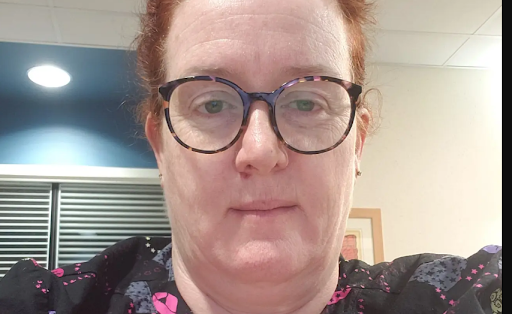

Laura Yeager has faced more than her fair share of violence while working as a psychiatric nurse. Over the last five years, she has been slapped, bit, kicked, and spat on countless times, but she always powered through because she loved helping young people work through their behavioral issues. She knew that when they acted out, it meant that they were struggling to voice their needs.
“When you work on a behavioral health unit,” Yeager explained, you have to understand “it runs on chaos. I mean, that’s just the nature of it.”
But she reached her breaking point in 2021 when she tried to restrain a violent patient and injured herself in the process. She remembers feeling a painful twist in her back as she leaned forward. The pain became so excruciating that she couldn’t restrain them any longer. That’s when she realized she would have to eventually quit the job that meant so much to her.
Studies show violence against nurses and healthcare workers is becoming more common across the U.S. Hospitals are now among the most dangerous places to work and nurses get injured at higher rates than any other occupation.
Workplace violence is leading more nurses to quit the industry, which only puts additional pressure on those who stay.
Yeager said she tried to make the best of the situation in “an already overloaded part of the medical profession,” but for her and many others, the job has become untenable.
“I’m a very strong advocate for the behavioral health population, because that’s what they need. I’m angry that I got injured, I’m angry that I can’t do it,” Yeager said. “The fact that more people are getting injured, and more people are leaving the bedside of behavioral health… It’s a recipe for disaster.”
While on the job, Yeager said avoiding violence isn’t really an option.
National Nurses United, the country’s largest nursing union, conducted a survey on workplace violence in October 2021. A third of U.S. hospital nurses reported an increase in workplace violence. The union ran the same survey six months later and the number shot up to 48% — nearly half of hospital nurses across the country.
Yeager said she started working with the most dangerous patients over the years because of her experience and talent for treating the most challenging cases. She did her best to handle the situation using either verbal de-escalation or “responsible restraint.”
But she became increasingly concerned about her health and safety as the years went by. By 2021, she was in her 40s and one of the oldest nurses on her unit.
“I said, ‘I am probably one of the oldest nurses here, and I’m being given the worst patient assignments because I have the behavioral health experience,” Yeager said. “And lo and behold, three hours later, I got injured.”
After injuring her back, she couldn’t work for three months. Her doctors told her that she would have to accept less physically straining work when she finished physical therapy.
But under-staffing made it nearly impossible to step away from the job.
She spent months looking for remote and desk jobs that wouldn’t put her in harm’s way. But she felt pressure to keep working.
Yeager said she would do anything “to get through the day,” including relying on pain medication and removing herself from strenuous situations. “I probably ended up doing more damage to my body.”
The union says longer wait times, staffing problems, and insurance issues can contribute to workplace violence by aggravating patients. There are also fewer staff members around to de-escalate violent situations.
Yeager said the widespread isolation and anxiety caused by the pandemic has only made the situation worse. Patients are coming in more agitated and restless than before, based on what she saw during her time in the behavioral ward.
She doesn’t know the solution, but she believes the problem will likely get worse as more clinicians leave the field due to excessive violence.
When we discuss students, we always mention their qualities. Those qualities show what they are…
If you or someone you know is juggling mental health issues alongside substance abuse, understanding…
For the last couple of weeks, the Israel-Hamas conflict has taken over the news cycle.…
Our eyes are invaluable, serving as our windows to the world. The ability to see…
Undoubtedly, one of the most demanding and challenging professions is nursing. Nurses work long hours in…
Echocardiography, or echo for short, is a key diagnostic test used by cardiologists to assess…